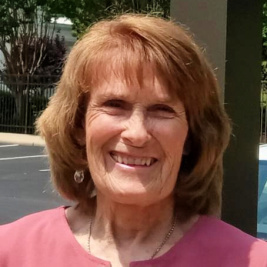Lillian Witt

Topics: American Old West, Anti-racism, Black Hills, Chautauqua, Communication, Discussion Leader, Education, History, Native American, South Dakota, Veterans/Military History, Women
Community: Gordon, NE
Program Types: Chautauqua, Pre-recorded Program Video, Speakers Bureau, Virtual Program(s)
lillyrae49@yahoo.com | (308) 360-9336
Dakota Daughters – Wounded Knee Massacre, 1890 (Chautauqua)
(Note: This is a combined presentation with fellow Humanities scholars Geraldine Goes in Center and Joyce Jefferson.)
Dakota Daughters commemorated the 130-year anniversary of the December 29, 1890, Wounded Knee Massacre in 2020. Now, they look to the future of 2024 and beyond. They have made it a priority to tell this story throughout South Dakota by relaying historical information in an interesting, thought-provoking, entertaining and memorable way. When technology is available, they augment their program to include slides from their collaboration with The Journey Museum and Periaktos Productions: “Reflections on the Massacre at Wounded Knee.” The Dakota Daughters hope when people see their play, they will realize that although we all are unique – such as skin color, cultures, beliefs – deep down we are not all that different. Mitákuye Oyás’iŋ – “We are all related.”
Annie Tallent 1887-1901 (Chautauqua)
A woman of refinement and education, Annie Tallent was the first white woman in the Black Hills. Along with her husband D.G. and their nine-year-old son Robert, Annie joined the Collins Russell Expedition on a long and grueling journey of deep snow and bitter cold enroute to the Black Hills. Even though she first entered Dakota Territory illegally, Annie Tallent represents the heroism and resourcefulness of pioneer women and is recognized as an interesting figure among the pioneers of the Black Hills, especially in the annals of early educational history.
Daddies’ Dreams (Chautauqua)
(Note: This is a combined presentation with fellow Humanities scholars Geraldine Goes in Center and Joyce Jefferson.)
Dakota Daughters Witt, Goes in Center and Jefferson share their fathers’ dreams, their experiences in the military and in WWII. Witt tells hilarious but true antics of her adventurous father as a young cowboy, WWII veteran and South Dakota rancher. Goes in Center relates stories her father told her when she was growing up and why he joined the military. Jefferson recounts a dashing, dapper young man and explores his life in the Army Air Corps, then the Air Force, his life after a 30-year career in the Air Force and retirement in Suisun City, California. We are indeed our Daddies’ Dreams. This is a contemporary PowerPoint.